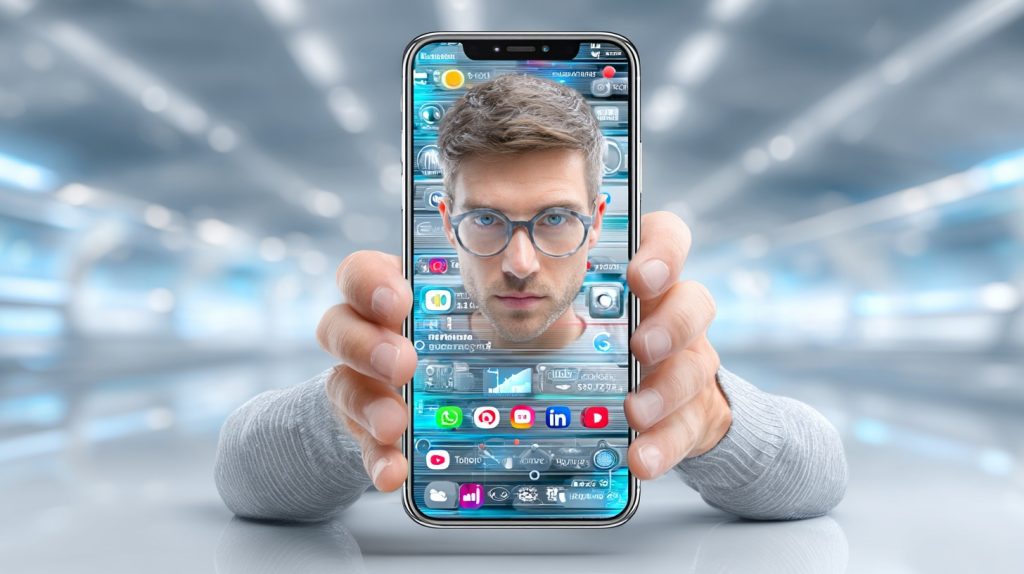Are you struggling to make sense of the endless options for promoting your brand? Then, it’s time to explore a smarter approach to modern marketing. On this occasion, welcome to “Plan Influencer Marketing: A Guide to Successful Campaigns.” This time, let’s uncover how strategic planning and execution can turn influencer collaborations into powerful growth opportunities. For other insights, check out this link.
This guide is brought to you by industry experts collaborating with marketing innovators dedicated to helping businesses achieve their goals. Fundacja Zdrowia i Rozwoju Czlowieka is this project’s coordinator, working with L4Y Learning for Youth GmbH and MAT Mevhibe Ates Teknoloji Vakfi.
Learning Objectives: Plan Influencer Marketing
- Understand the fundamentals of planning and executing influencer campaigns.
- Learn how to set effective campaign goals and objectives.
- Gain insights into setting objectives and KPIs for social media campaigns.
- Explore real-life success stories and expert advice on influencer marketing.
Introduction: Plan Influencer Marketing
In today’s digital world, social media is indeed a powerful tool for businesses that want to reach more people. Influencer marketing lets brands use the popularity of social media personalities to promote their products and services. This training module helps young people and also youth workers learn how to use social media for business, focusing on planning and running influencer campaigns.
Influencer marketing has in fact changed a lot over the years; by 2023, authenticity and connecting with niche communities had become very important for successful campaigns. Brands are working more with micro and also nano influencers to reach specific and loyal audiences. Also, interactive content like live streams and Q&A sessions is becoming popular because it helps connect directly with audiences (The Cirqle, 2024).
Influencer campaigns are important in modern business because they help brands connect with potential customers in a personal way, building trust and credibility. This
module will guide you on how to set campaign goals, make plans, and also measure success with well-defined Key Performance Indicators (KPIs).
Developing Campaigns
Setting clear campaign goals and objectives is key to any successful influencer marketing plan. These goals should match what the brand wants overall, like increasing brand awareness, getting more website tra9ic, or boosting sales. A well-thought-out campaign timeline and content plan are indeed important to make sure everything runs smoothly and has the most impact.
Real-life examples show why strategic planning is important. For example, Gymshark, a popular activewear brand, has used influencer marketing successfully by working with fitness influencers who connect well with their target audience. This strategy has helped Gymshark build a strong community around its brand, leading to significant growth and
engagement (Home Team, 2024).
To create a successful campaign, it’s important to know your target audience and chooseinfluencers whose followers are similar to your brand’s customers. Long-term partnerships are usually better than one-time collaborations because they help build trust and authenticity over time. Also, using interactive content like live streams and Q&A sessions can increase engagement and create a stronger connection with the audience.
Setting Objectives and KPIs
Setting success metrics is important for tracking how well your campaign is doing. Key Performance Indicators (KPIs) should be clear, measurable, realistic, relevant, and also time- based (SMART). Common KPIs in influencer marketing include engagement rate, reach, conversions, and also return on investment (ROI).
Think of KPIs like milestones on a journey. Just like milestones help you see how far you’ve come, KPIs help you measure if your campaign is reaching its goals. It’s important to keep checking and adjusting based on performance data to make sure the campaign stays on track and gets the results you want.
For example, a campaign trying to increase brand awareness might focus on KPIs like reach and impressions, while a campaign aiming to drive sales would focus more on conversion rates and ROI. By matching KPIs to campaign goals, brands can learn a lot about how well they are doing and make smart decisions to improve their strategies.
Success Stories: Plan Influencer Marketing
Inspiring success stories abound in the world of influencer marketing. Brands like Glossier have e9ectively leveraged influencer campaigns to create a sense of community and loyalty among their customers. By collaborating with beauty influencers who genuinely love and use their products, Glossier has built a strong brand presence and achieved impressive sales growth (Mari Vardanyan, 2023).
Another notable example is the collaboration between Daniel Wellington and various influencers. By gifting their watches to influencers and encouraging them to share discount codes with their followers, Daniel Wellington successfully increased brand visibility and sales. This strategy not only drove immediate conversions but also fostered long-term brand loyalty (Saral, 2022)
Innovative approaches, such as using augmented reality (AR) filters and gamified content, have also proven successful in engaging audiences creatively. These strategies not only capture attention but also encourage active participation, leading to higher engagement and conversion rates. Innovative approaches, such as using augmented reality (AR) filters and gamified content, have also proven successful in engaging audiences creatively. These strategies not only capture attention but also encourage active participation, leading to higher engagement and conversion rates.
AI Driven Campaign
An AI-driven campaign uses artificial intelligence to plan, run, and analyze marketing activities without relying only on human instincts. By using data and machine learning, these campaigns can look at a lot of information to understand how customers behave by finding patterns in their actions. They can also personalize marketing messages by learning about each person’s preferences and adjusting communications to fit each customer. AI can also predict which strategies will work best, helping marketers focus on actions that get the best results (The Magazine, 2021).
The Role of AI in Marketing Today
Marketing is all about connecting with customers. AI makes this connection better by looking at a lot of data to make smarter choices. For example, AI can help companies decide which ads to show you based on your interests or guess what products you might like.
According to Davenport, Guha, and Grewal (2021), AI is used in marketing for tasks like:
- Personalized Recommendations: Suggesting products you might like based on what you have bought before.
- Chatbots: Automated helpers that answer customer questions online.
- Predictive Analytics: Using data to predict future customer behavior.
Types of AI Applications in Marketing
AI tools used in marketing can be grouped by two things: how smart they are and how they are used in marketing systems.
- Intelligence Level:
- Task Automation: These AI tools do simple, repetitive tasks by following
rules. They can not solve complex problems. - Machine Learning: These tools learn from data to make predictions and
decisions. They can handle more complex tasks like finding patterns and
making personalized suggestions.
- Task Automation: These AI tools do simple, repetitive tasks by following
- Integration Level:
- Stand-Alone Applications: These are separate tools that customers or
employees use outside of the main marketing systems. For example, a
mobile app that helps you pick paint colors. - Integrated Applications: These AI tools are built into existing systems, like
a website that recommends products while you shop.
- Stand-Alone Applications: These are separate tools that customers or
The Four Quadrants of Marketing AI
Combining these two factors, we get four types of AI tools used in marketing:
- Simple Stand-Alone AI: Basic tools that perform simple tasks separately from
main systems (e.g., basic chatbots). - Simple Integrated AI: Basic tools built into existing systems (e.g., automated email
responses in a customer service system). - Advanced Stand-Alone AI: Complex tools that perform advanced tasks separately
(e.g., an app that analyzes your skin type to recommend skincare products). - Advanced Integrated AI: More complex tools that are part of bigger systems (e.g.,
personalized product recommendations on a shopping website).
Implementing AI in Marketing
Using AI in marketing takes careful planning and a smart approach. Here are some steps companies can take to use AI effectively:
- Start Small: Start with basic AI tools that do simple, repetitive tasks. For example, automated email responses can handle common customer questions, making communication quick and consistent. This not only makes customers happy but also lets human workers focus on more complex tasks. Starting with small projects lets companies test how well AI works without spending a lot of money or taking big risks, which helps them learn for future projects.
- Collect and Analyze Data: Data is the foundation of any AI system. Companies should gather good-quality, relevant customer data in a legal and ethical way. This includes information like what customers have bought, their browsing habits, and their feedback. By analyzing this data, AI can find patterns and trends that people might miss. This helps businesses understand customer needs better, improve their marketing strategies, and make smart, data-driven decisions.
- Advance Gradually: As companies become more confident and experienced with AI, they can start using more advanced tools. For example, machine learning can look at large amounts of data to predict customer behavior, personalize marketing, and optimize prices. Advanced AI can also divide customers into groups more accurately, allowing for more targeted marketing. By gradually adding more complex AI tools, companies can control costs, make sure staff are properly trained, and smoothly add AI to their existing systems.
Challenges and Risks
While AI has many benefits, it’s important to understand and address the challenges to make sure it works well:
Technical Difficulties
- Technical Difficulties: Using AI systems can be complicated. It needs special skills to choose the right methods, manage data, and keep the system working well. Problems like software bugs, crashes, or incorrect data processing can hurt AI performance. Companies may need to hire skilled IT experts or work with tech providers to handle these issues.
Integration Issues
- Integration Issues: Adding AI to existing marketing systems and processes is not always easy. Different systems may not work well together, causing data issues or disrupting operations. Careful planning is needed to ensure that AI tools fit well with current systems. This might mean using special software to connect systems, adopting standard data formats, or changing some processes to work better with AI.
Privacy Concerns
- Privacy Concerns: AI systems collect and use personal data, which can raise privacy issues. Customers might feel uncomfortable about how their information is used, leading to trust issues or negative feelings about the brand. Also, laws like GDPR have strict rules about data handling. Companies need to be clear about how they use data, get consent, and give customers control over their information. Strong security measures are also needed to protect against data breaches.
Ethical Considerations
- Ethical Considerations: AI can sometimes reinforce biases found in the data it learns from, leading to unfair treatment of certain groups of customers. For example, if AI mainly learns from data from one group, it might not serve other groups well. Companies have a responsibility to make sure their AI is fair and ethical. This means regularly checking the AI, using diverse data, and involving different perspectives in the development process to identify and fix potential problems.
- Cost and Resource Allocation: Using AI can be expensive, including costs for technology, infrastructure, and skilled workers. There are also ongoing costs for maintaining and updating AI systems. Companies need to carefully think about whether the return on investment makes AI worth it for their goals. Using scalable solutions or cloud-based services can help manage costs.
- Workforce Impact: Adding AI can change job roles a lot and make employees worry about losing their jobs. It’s important to address these concerns by explaining how AI can help people do their jobs better, not replace them. Providing training can help staff adapt to new technology and feel more satisfied by focusing on creative and strategic work instead of repetitive tasks.
Expert Advice: Plan Influencer Marketing
Experts say that being honest and open is really important in influencer marketing. Neal Scha9er, a social media expert, says, “The key to successful influencer marketing is choosing the right influencers who truly match your brand values” (The Cirqle, 2024). Building real relationships with influencers can lead to stronger partnerships and long- term success.
Marketing experts also recommend tracking campaigns and making changes based on how well they are doing. This helps keep campaigns relevant and e9ective. For example, adjusting content strategies based on audience feedback and engagement can help brands get better results.
Conclusion: Plan Influencer Marketing
In conclusion, influencer marketing is a great way for businesses to connect with their audience and reach their marketing goals. By setting clear goals, planning smart campaigns, and measuring success with well-defined KPIs, brands can make the most out of influencer marketing. It’s important to keep learning and adapting in this constantly changing field to make sure your campaigns stay e9ective.
Reference Section: Plan Influencer Marketing
- Home Team. (2024). Gymshark’s Influencer Marketing Strategy. Retrieved from https://www.houseofmarketers.com/how-gymshark-grew-a-100m-business-in-7-years-with-influencers/
- Mari Vardanyan. (2023). Glossier’s Community-Driven Marketing. Retrieved from
- The Cirqle. (2024). The Importance of Authenticity in Influencer Marketing. Retrieved from https://thecirqle.com/blog-post/the-importance-of-authenticity-in-influencer-marketing
- Saral. (2022). Daniel Wellington’s Influencer Strategy. Retrieved from https://www.getsaral.com/academy/daniel-wellington-influencer-marketing
- The Magazine (2021). How to Design an AI Marketing Strategy. Retrieved from https://hbr.org/2021/07/how-to-design-an-ai-marketing-strategy















